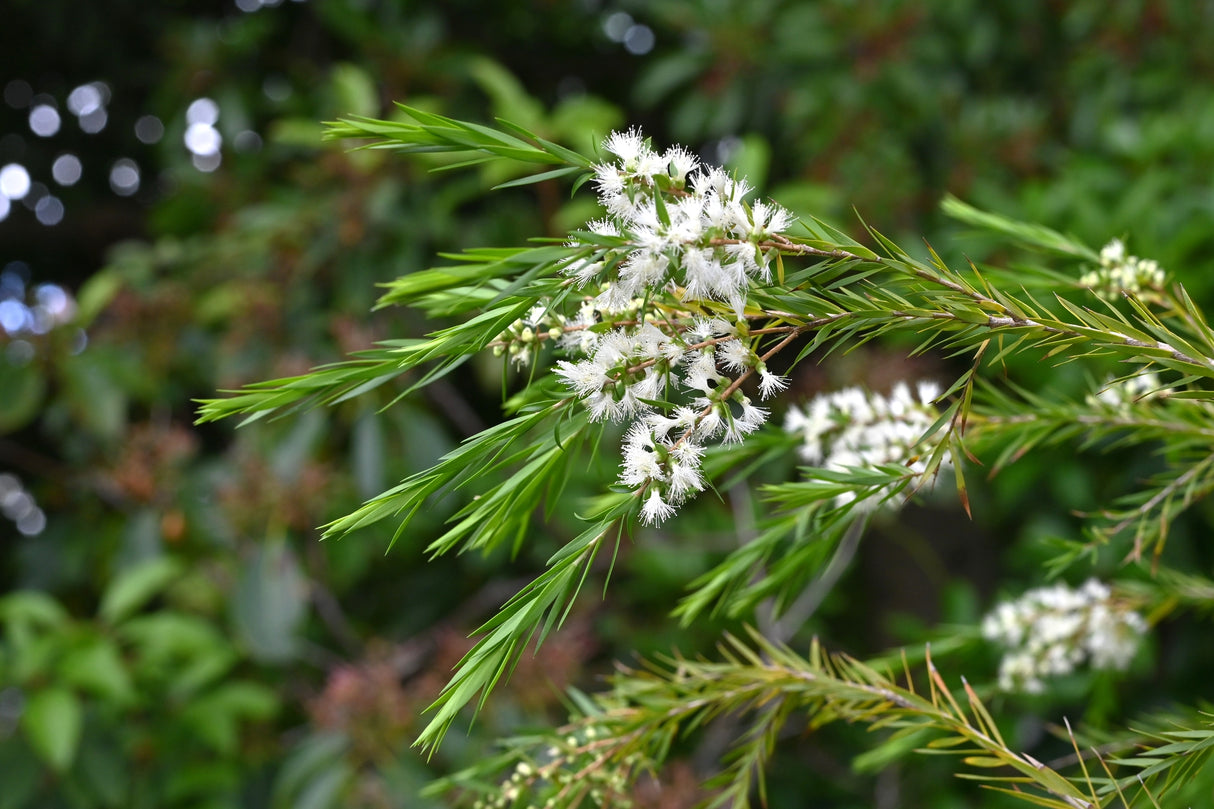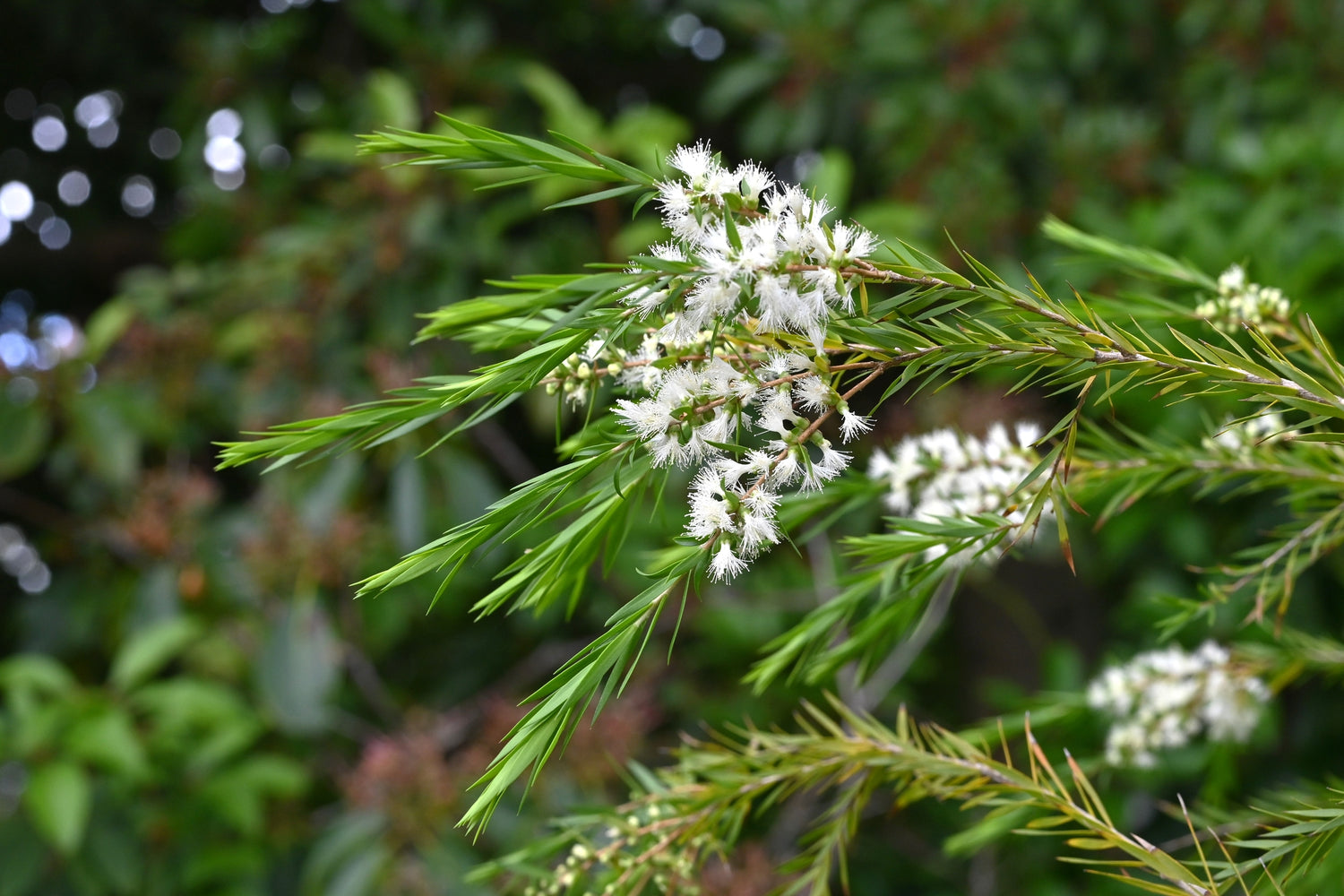Description
Description
The Melaleuca trichostachya, commonly known as the Narrow-leaved Paperbark, is a hardy, medium-sized evergreen tree or shrub native to northern Australia. Known for its distinctive papery bark, narrow, linear leaves, and creamy-white flower spikes, this tree is well-adapted to tropical and subtropical climates. It typically grows to 8–15 meters tall and is commonly found in wetlands, along watercourses, or in flood-prone areas.
This resilient species is often used for erosion control, shade, and ornamental purposes in landscapes.
Specifications:
- Height: 8–15 meters
- Width: 4–8 meters
- Native to: Northern Australia
- Foliage: Narrow, linear, light green leaves; evergreen
- Growth rate: Moderate
Conditions:
- Soil: Prefers well-drained to waterlogged soils; tolerates sandy, loamy, or clay soils
- Light: Full sun
- Water: Moderate to high; tolerates periodic flooding and waterlogged conditions
- Climate: Thrives in tropical, subtropical, and warm temperate regions
Additional Features:
- Flowers: Creamy-white, bottlebrush-like flower spikes that bloom in spring and summer, attracting pollinators like bees
- Bark: Distinctive, peeling, papery bark that adds textural interest
- Uses: Ideal for erosion control, shade, windbreaks, and ornamental planting in wetlands or low-lying areas
- Spacing: Plant 4–6 meters apart for individual growth or windbreaks
- Low Maintenance: Requires minimal care; prune to shape or remove deadwood if necessary
- Pest Resistance: Resilient to pests and diseases with basic care
- Environmental Benefits: Stabilizes soils, provides habitat for wildlife, and supports wetland ecosystems
The Narrow-leaved Paperbark is a versatile and resilient tree, perfect for adding beauty and ecological value to tropical and subtropical landscapes. Its adaptability to wet conditions makes it an excellent choice for challenging environments.
Delivery Information
Delivery Information
We offer flexible delivery options to ensure your tree arrives in perfect condition, whether you're located nearby or on the other side of the world.
- Domestic Deliveries:
We provide reliable delivery services across the country, utilizing our fleet of specialized trucks and train freight networks. Whether you're in a metropolitan area or a remote location, we ensure your trees arrive safely and efficiently. - International Deliveries:
For our global customers, we coordinate delivery via sea freight. With 30+ years of exporting experience, every tree is carefully prepared to meet international biosecurity standards and packaged for safe transport to its destination.
Our team will work closely with you to arrange the most suitable delivery method based on your location, project timeline, and tree size. No matter where you are, we ensure a seamless delivery experience.
Have additional questions? Contact us to discuss your specific delivery requirements!
FAQ's
FAQ's
How are ex-ground trees prepared for delivery?
All ex-ground trees are carefully dug with their rootball intact to preserve the root system and minimize transplant shock. Each tree is stabilized and treated with specialized solutions to promote health during transit. The rootball is wrapped to retain moisture and protect it from damage, and water crystals are added to provide essential nutrients and hydration for the journey. These meticulous preparations ensure your tree remains healthy and ready for planting, whether it’s traveling across the country or overseas.
How long does delivery take?
Delivery times vary depending on your location and the size of your order. Domestic deliveries typically take 1–2 weeks, while international shipping may take several weeks depending on the destination. Contact us for specific timelines.
Are there minimum order quantities for delivery?
For local and nationwide orders, there are no strict minimums, though delivery costs may vary based on order size. For international orders, a minimum quantity is often required to optimize freight efficiency. Contact us to discuss your needs.
Do you provide installation services?
While we focus on the supply and delivery of trees, we can connect you with trusted landscaping partners who specialize in tree installation and site preparation.
Can I visit your farms to select trees?
Yes, we welcome visits to our farms by appointment. Seeing the trees in person allows you to select the perfect specimens for your project. Contact us to schedule a visit.



 Inspection available upon request
Inspection available upon request
 Photos are of example stock
Photos are of example stock
 International Delivery Available
International Delivery Available
 Available For Export
Available For Export
